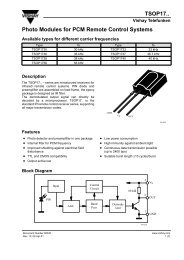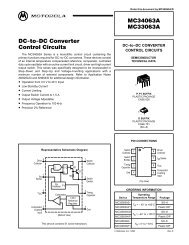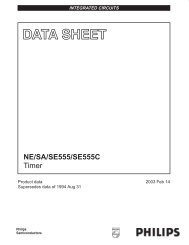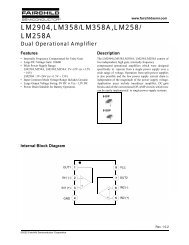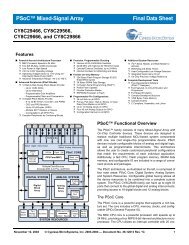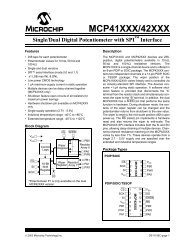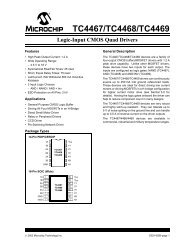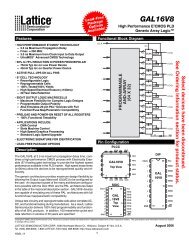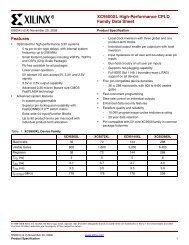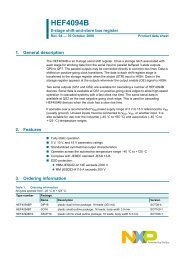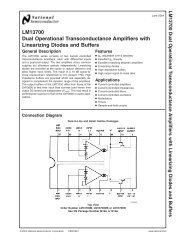MCP23017 - Microchip
MCP23017 - Microchip
MCP23017 - Microchip
You also want an ePaper? Increase the reach of your titles
YUMPU automatically turns print PDFs into web optimized ePapers that Google loves.
<strong>MCP23017</strong>/MCP23S17<br />
1.3.2.2 I 2 C Read Operation<br />
I 2 C Read operations include the control byte sequence,<br />
as shown in the bottom of Figure 1-1. This sequence is<br />
followed by another control byte (including the Start<br />
condition and ACK) with the R/W bit set (R/W = 1). The<br />
<strong>MCP23017</strong> then transmits the data contained in the<br />
addressed register. The sequence is ended with the<br />
master generating a Stop or Restart condition.<br />
1.3.2.3 I 2 C Sequential Write/Read<br />
For sequential operations (Write or Read), instead of<br />
transmitting a Stop or Restart condition after the data<br />
transfer, the master clocks the next byte pointed to by<br />
the address pointer (see Section 1.3.1 “Byte Mode<br />
and Sequential Mode” for details regarding sequential<br />
operation control).<br />
The sequence ends with the master sending a Stop or<br />
Restart condition.<br />
The <strong>MCP23017</strong> Address Pointer will roll over to<br />
address zero after reaching the last register address.<br />
Refer to Figure 1-1.<br />
1.3.3 SPI INTERFACE<br />
1.3.3.1 SPI Write Operation<br />
The SPI write operation is started by lowering CS. The<br />
Write command (slave address with R/W bit cleared) is<br />
then clocked into the device. The opcode is followed by<br />
an address and at least one data byte.<br />
1.3.3.2 SPI Read Operation<br />
The SPI read operation is started by lowering CS. The<br />
SPI read command (slave address with R/W bit set) is<br />
then clocked into the device. The opcode is followed by<br />
an address, with at least one data byte being clocked<br />
out of the device.<br />
1.3.3.3 SPI Sequential Write/Read<br />
For sequential operations, instead of deselecting the<br />
device by raising CS, the master clocks the next byte<br />
pointed to by the Address Pointer. (see Section 1.3.1<br />
“Byte Mode and Sequential Mode” for details<br />
regarding sequential operation control).<br />
The sequence ends by the raising of CS.<br />
The MCP23S17 Address Pointer will roll over to<br />
address zero after reaching the last register address.<br />
DS21952B-page 6 © 2007 <strong>Microchip</strong> Technology Inc.



